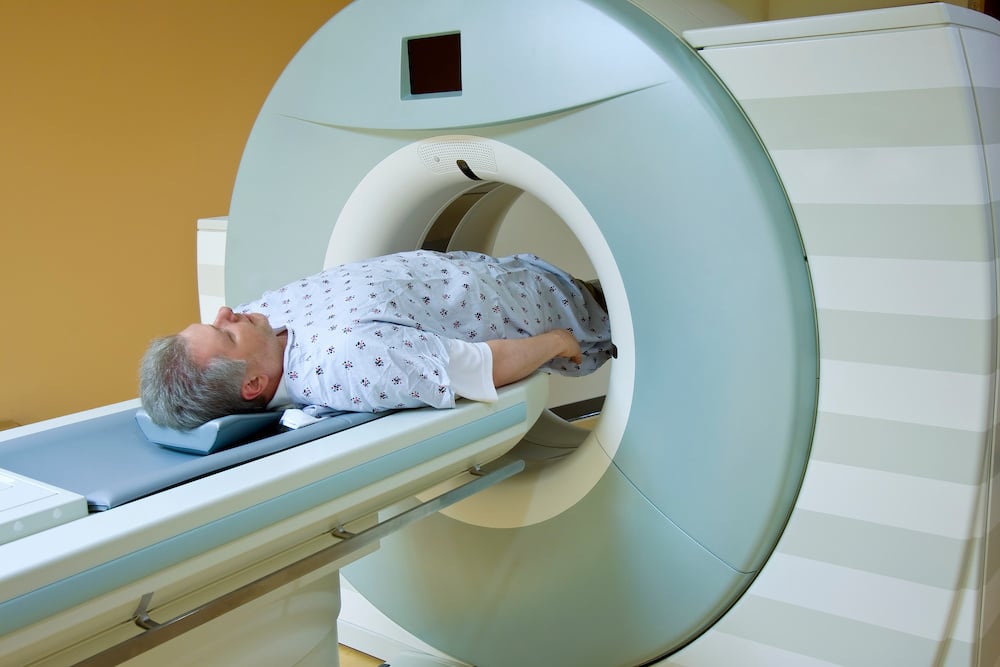
If your urologist suspects you may have prostate cancer based on PSA test scores, imaging is often the next step in the diagnosis process.
Out of all the available imaging technologies, an MRI provides the most accurate prostate images. A PI-RADS score will be listed in the report when a radiologist reviews the MRI results. This scoring system gives your urologist some guidance as to the next steps they should take.
What is the PI-RADS Scoring System?
The Prostate Imaging Reporting and Data System (PI-RADS) is a standardized scoring tool for evaluating possible cases of prostate cancer. It was developed to improve the prostate cancer diagnosis process, reducing the number of unnecessary biopsies.
An MRI provides highly accurate images of soft tissue, such as prostate tissue. Images are taken of each suspected area on the prostate and then individually scored between a one and a five. The final PI-RADS “score” is obtained by combining the scores from MRI images of each suspected area.
The radiologist who reviews the MRI images is the doctor who determines the PI-RADS score:
- PI-RADS 1: very low risk; no signs of prostate cancer.
- PI-RADS 2: low risk; prostate cancer is unlikely.
- PI-RADS 3: intermediate risk; clinically significant prostate cancer may or may not be present.
- PI-RADS 4: high risk; clinically significant prostate cancer is likely to be present.
- PI-RADS 5: very high risk; clinically significant prostate cancer is most likely present.
Why is My PI-RADS Score Useful?
If PSA in the blood is steadily rising, and your urologist has ruled out common conditions such as prostatitis and benign prostate hyperplasia (BPH), they are likely going to request images before going straight to a biopsy.
MRI images and the PI-RADS score do not provide a diagnosis of prostate cancer. The score is used to determine if further testing should be done. Prior to using MRIs as part of the diagnostic process, it was common for many men to go through a biopsy with results that showed no signs of clinically significant prostate cancer. Typically, a PI-RADS of three or higher will lead to scheduling a biopsy.
Prostate Biopsies: The Ultimate Determining Factor
Most biopsies remove several samples from the prostate to see if abnormal cells are present in one area versus another area. Up to 12 samples are taken, often guided by the MRI to pinpoint the areas identified in the MRI images that produced a PI-RADS score.
The pathologist provides a report of the results that includes a Gleason score. This score is determined by assigning a number between one and five to the most predominant cell pattern in the biopsy results and a score to the second most predominant cell pattern. A score of 1 means the cells look normal, while a score of 5 means the cells are highly different from normal prostate cells.
Adding those two numbers together produces the Gleason score. A score of five or less is not considered cancer.
- Gleason 6: Considered low-grade cancer. Treatment does not usually need to start at this time, and watchful waiting will begin. This process monitors the patient every six months or more often to see if there are any signs of the cancer growing further. Occasionally, another biopsy will be performed to see if the Gleason score has increased.
- Gleason 7: In this case, it depends on the numbers added together to get to seven. If it was 3+4, the oncologist may recommend watchful waiting. A score of 4+3 means the cancer is growing, and treatment may need to begin. This is considered intermediate-grade cancer.
- Gleason 8, 9, or 10: The cells look very different from healthy cells, which is called poorly differentiated or undifferentiated. Treatment will be recommended right away as this is considered high-grade prostate cancer.
Learn more in our blog: What Does the Gleason Score Mean?
Don’t Skip Your Prostate Cancer Screenings
Be sure you visit your doctor for regular checkups, including a PSA blood test starting at age 50. Also, talk to your doctor about any signs or symptoms you may be experiencing. Remember, an elevated PSA can be related to non-cancerous prostate conditions. Your doctor’s first step will be to rule these out. If further testing determines that you have prostate cancer, there is most likely some time to choose the best prostate cancer treatment plan for you.
Related Reading: Where to Start After a Prostate Cancer Diagnosis?
Finding the Best Care for Prostate Cancer in the Atlanta Area
Our team, located in Conyers, Covington, Decatur, and Snellville, Georgia, will meet with you to discuss your biopsy results and recommend the next steps. This is a good time to ask questions about your options, and our oncologists will review them with you. Radiation therapy options are often available so that you do not need to have surgery that often results in long-term side effects. We are also available for second opinions on the best prostate cancer treatment plan for you.



